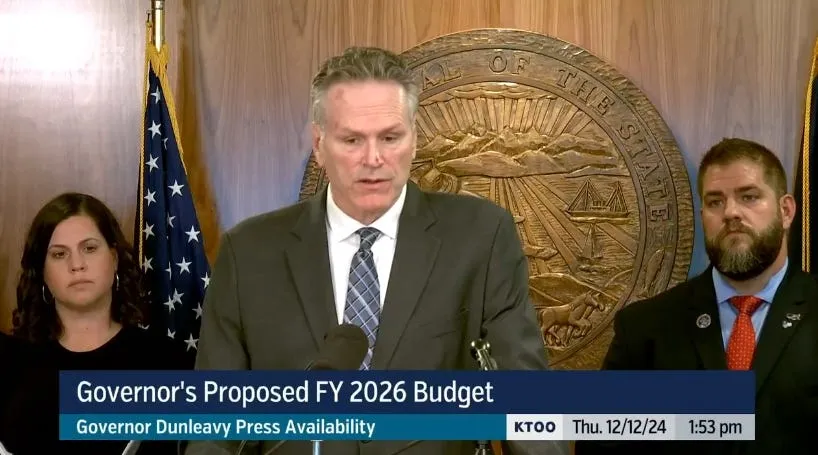Substantial litigation risk
As the deadline for action looms, legislators turn up the scrutiny on Dunleavy's plan to split the Department of Health and Social Services into two departments.

Good morning, Alaska! Today is Day 49 of the 32nd Legislature, Murkowski has officially lost the Trump endorsement (gasp!), the Iditarod is underway without the usual fanfare on an unusual course and my fantasy mushing team is already on pace to take home the Red Lantern.
The House’s pledge to work weekends following the covid-19 outbreak hasn’t made for packed weekends but the Saturday-afternoon hearing of the House Health and Social Services Committee more than made up for it. With a brand new legal memo in hand, the committee continued its review of the administration’s proposed split of the Department of Health and Social Services into the Department of Health and Department of Family and Community Services. The new legal analysis from the Legislature’s nonpartisan legal team raises concern that the plan, as proposed, is an impermissible use of the executive order process. The Alaska Constitution grants the governor the power to reorganize executive departments via executive order but he can’t create new powers, delete old ones or make other substantive changes. Basically put, the administration can reorganize, renumber and rename state statutes, but substantive changes that alter state law still reside in the hands of the Legislature.
While most of Executive Order 119 falls into the realm of the permissible, there’s about two dozen sections that the legislature’s attorneys believe violate the executive order rules and therefore, as legal memo author Andrew Dunmire told the committee on Saturday, would create “substantial litigation risk.” You can find find the full memo here, but here’s the takeaway conclusion:
“It appears that this executive order would impermissibly create substantive changes to existing law. However, this is a lengthy, complete and dense executive order and it is possible that additional legal questions and issues may exist,” explained the memo. “The executive order also contains multiple errors and technical issues that cannot be corrected by the revisor and editor through the enrollment process.”
The big takeaway problems with the order are as follows:
- It changes law by preventing registered nurses from pronouncing the death of a patient at the Alaska Pioneers’ Homes and Alaska Veterans’ Home. It’s a power that nurses currently have under state law that’d be taken away by the executive order.
- It adds the new commissioner to several boards, taking several committees from an odd number of members to an even number of members while also inflating the administration’s sway on the committees.
- It deletes the definition of “crisis stabilization center” from state law altogether. The language was added just last year in an effort by the Legislature to ensure people in crisis get the treatment they need when interacting with law enforcement. As the legal memo notes, this will create unintended problems.
DHSS Commissioner Adam Crum addressed the committee, but didn’t speak directly to the changes affecting registered nurses or the crisis stabilization center language. He dismissed the concern about the changes to the boards, arguing that in most cases those new positions wouldn’t have a vote.
Why it matters: The Legislature has until March 21 to take action to halt the executive order from moving forward. The House Health and Social Services Committee has introduced the necessary measure to halt it, House Special Concurrent Resolution 1, and it’s scheduled to be heard on Tuesday. The House Health and Social Services Commissions, co-chaired by Reps. Tiffany Zulkosky and Liz Snyder, has been doing the heavy lifting on evaluating the plan and debunking some of the administration’s claims—like their claim that it’ll save the state millions of dollars (most of the cited savings are cuts that have already been made under the existing structure and the split will cost about $5 million annually). Whether the House can get the Senate on board to review the resolution is another question, but regardless the legal questions could stop the whole plan in its tracks.
#GavelClassic
It’s time for #akleg Twitter’s favorite guessing game, the #GavelClassic when we all try our best to guess when the Legislature will adjourn sine die for the session. After several years under the guidance of KTOO’s Jeremy Hsieh, I’m taking it over with a few tweaks: It’s now Price is Right rules (closest without going over) and there’s a handy new form for submitting your guesses! Guess now!
We’ll have subscriptions to the Memo for the winners.
Around the web
- After years of gutting cuts to the University of Alaska and a few years of a lock ‘em up approach to criminal justice, the state now spends more on imprisoning people than it does on higher education. Under the Dunleavy administration and the repeal of the much-maligned criminal justice reform bill Senate Bill 91, prison spending has been a significant budget driver that has helped erase any cuts made since Dunleavy took office. From the Anchorage Daily News: Alaska now spends more on prisons than its university system, and the gap is widening
- Nearly a quarter of Alaska’s population has received the vaccine, but just what does that mean for people with full vaccinations? In the ever-shifting world of covid-19 guidance, the CDC has finally come up with recommendations. AP via Anchorage Daily News: Fully vaccinated people can safely gather without masks, CDC says in long-awaited guidelines
- A lot of folks have been wondering about whether the administration is following the ethical rules for former Chief of Staff Ben Stevens’ move to ConocoPhillips. Well ConocoPhillips and the administration says everything’s fine! Completely fine. From Alaska Public Media: Alaska Gov. Dunleavy’s administration says it’s ensuring “ethical transition” of chief of staff to ConocoPhillips job
- Last week’s Friday in the Sun column was a little more involved than it has been in the last few weeks, in case you may have overlooked it. From the blog: Friday in the Sun (March 5): The Jumping the Shark edition
The Legislature is finally getting vaccinated
I can’t thank @SEARHCTweets enough for providing enough vaccine to protect the #akleg — especially our staff of nonpartisan public servants in Records, Teleconference, Maintenance, etc. — from COVID 19.
— Jesse Kiehl (@JesseKiehl) 3:08 AM ∙ Mar 8, 2021
Aatlein gunalchéesh.
The Alaska Memo Newsletter
Join the newsletter to receive the latest updates in your inbox.




